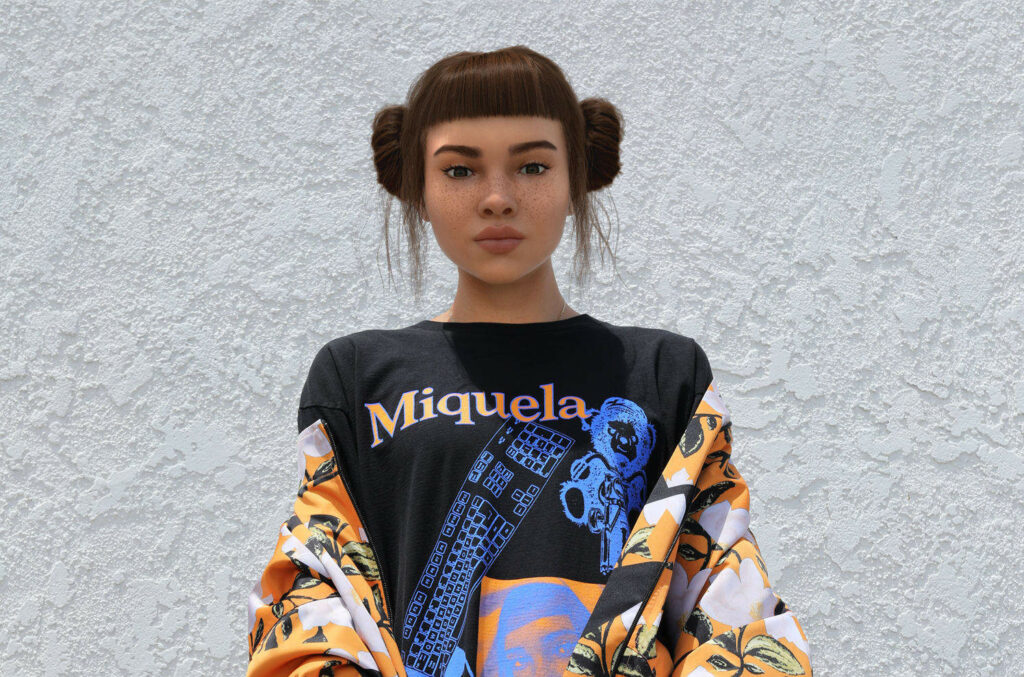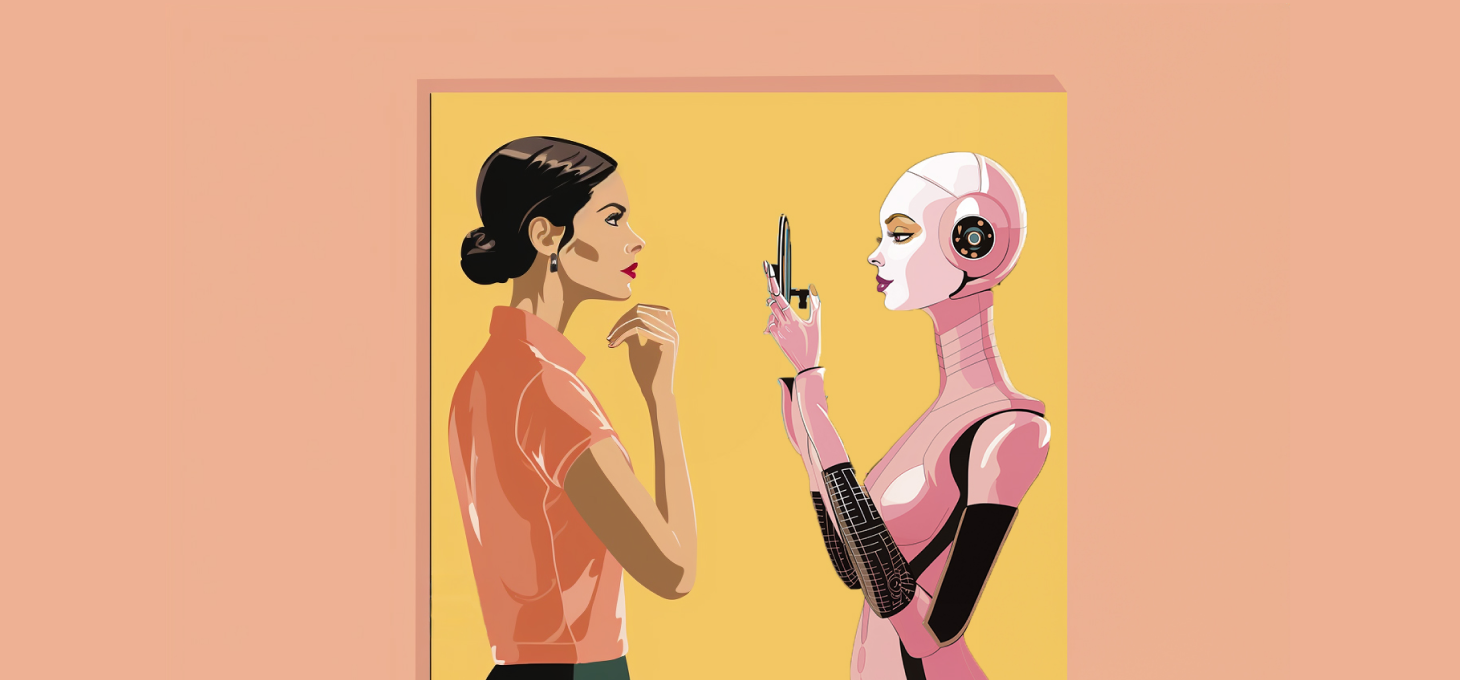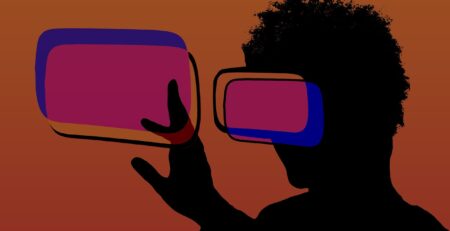Virtual influencers may seem like a recent phenomenon. It has captured the attention of social media and marketing industries alike. But the roots of this marketing tool extend back nearly a decade. 2016 marked the debut of the first widely recognized virtual influencer. It heralded a new era where digital avatars could wield real influence over online audiences. In the past few years, advancements in artificial intelligence (AI) technology have accelerated. This has made the popularity of these virtual personas grow rapidly.
The allure of virtual influencers lies not just in their novelty. It is also in their ability to embody lifestyles, challenge traditional marketing, and push boundaries. Uncover the complex landscape of virtual influencers where technology intersects with social influence in ways previously unimaginable.
Table of Contents
The Saga of Lil Miquela
Lil Miquela burst onto the social media scene in April 2016. Created by the startup Brud, she quickly gained a significant following on Instagram. Miquela had a distinctive blend of realism and digital artistry. Her engaging content made many followers initially believe she was a real person.

However, Miquela’s rise to fame was not without its mysteries and controversies. Early on, there was rampant speculation about her true nature. With her identity being concealed, the curiosity around Miquela was bubbling over. Was she a highly edited human, a CGI creation, or something else entirely? This intrigue only fueled her popularity. The creators of Miquela played into these conspiracies, weaving a narrative around her character. Popular Youtubers created conspiracy videos speculating on her identity. Meanwhile, Miquela interacted with real celebrities and other influencers. This further blurred the lines between reality and fiction.
In April 2018, the saga took a dramatic turn with the so-called “face reveal.” Another virtual influencer, Bermuda, hacked Miquela’s Instagram account. The hacker exposed Miquela as a digital creation. This revelation, instead of diminishing her influence, catapulted her into a new realm of fame. People were fascinated by the technology behind her and the storytelling that made her seem so real.
The reception of Lil Miquela’s face reveal marked a significant step forward for virtual influencers. It highlighted the potential of AI and digital art in creating compelling and influential personas. Brands quickly took note of her impact. This led to collaborations with fashion labels and social activism campaigns. Miquela even began to release music. Her journey from a mysterious avatar to a celebrated influencer set the stage for a more virtual world.
What Are Virtual Influencers?
Virtual influencers are computer-generated characters designed to operate on social media platforms like real human influencers. They are created using advanced graphic design, animation, and artificial intelligence. These digital personas can interact with followers, post content, and collaborate with brands. Their lifelike appearances and personalities make them indistinguishable from people at first glance.
Characteristics of Virtual Influencers
- Lifelike Appearance: Virtual influencers are crafted with meticulous detail. They often resemble humans with realistic skin textures, facial expressions, and body movements.
- Curated Personalities: Each virtual influencer has a distinct personality, backstory, and set of interests. This allows them to engage with their audience authentically.
- Consistent Availability: Unlike human influencers, virtual influencers are available 24/7. They are able to maintain a continuous online presence without the need for rest or breaks.
- Controlled Image: Brands and creators have complete control over the virtual influencer’s actions, appearance, and messaging. They can ensure consistent brand alignment and risk management.
- Innovative Content: Leveraging advanced graphics and AI, virtual influencers can produce unique and creative content. This is usually more challenging or even impossible for human influencers to replicate.
These virtual personas are more than just digital artworks; they are strategic tools used in marketing and social media. They can engage with followers, endorse products, and participate in brand campaigns. In many ways, they are just like human influencers. However, they have the added advantages of consistency, control, and innovative content creation. This blend of realism and creativity is what makes virtual influencers so important to modern digital marketing.
Top Virtual Influencers in Marketing
While Lil Miquela may be the most famous virtual influencer, she is far from the only one. Here are some of the most popular virtual influencers.
Shudu
Shudu is known as the world’s first digital supermodel. She was created by photographer Cameron-James Wilson. Shudu’s stunningly realistic images have graced the feeds of major fashion brands like Balmain and Fenty Beauty. Her presence challenges traditional beauty standards. This showcases the potential of virtual influencers in the fashion industry.
Noonoouri
Noonoouri is a virtual influencer with a distinctive, cartoon-like appearance. She was created by designer Joerg Zuber. This influencer has worked with luxury brands such as Dior, Versace, and Valentino. Noonoouri’s unique style and artistic content appeal to high-fashion enthusiasts. Brands have used her image to convey a sense of exclusivity and innovation. Her collaborations often involve virtual fashion shows and digital art.
Imma
Imma is a Japanese virtual influencer created by the company Aww Inc.. She has gained popularity for her trendy fashion sense and vibrant personality. Imma has partnered with brands like Ikea, Puma, and Valentino as well. She helps brands reach a younger audience.
KFC’s Colonel Sanders
In a bold and humorous move, KFC introduced a virtual version of their iconic mascot, Colonel Sanders, as a virtual influencer. This digital Colonel Sanders is complete with trendy outfits and a youthful persona. He has appeared in various marketing campaigns on Instagram. KFC’s innovative approach has generated significant media coverage and online buzz.
Virtual Influencers in Marketing
Virtual marketing is a key feature in the future of tech, and these influencers are at the forefront of it.
Controlled Image and Messaging
Virtual influencers allow brands to maintain complete control over the influencer’s actions, appearance, and messaging. This control minimizes the risk of scandals or unpredictable behavior. It is a safer option than human influencers.
Consistent Availability
Unlike human influencers, virtual influencers do not require rest or time off. They are available 24/7, enabling brands to maintain a continuous online presence and engage with their audience around the clock.
Innovative and Creative Content
Virtual influencers can be placed in any setting or scenario, limited only by the imagination of their creators. This flexibility allows brands to produce highly creative and visually engaging content.
Audience Engagement
Virtual influencers often possess a high level of interactivity. They engage with followers through comments, stories, and direct messages. This interaction fosters a sense of connection and loyalty among their audience.
AI Beauty Pageants
AI beauty pageants are another intriguing application of virtual influencers in marketing. These contests feature AI-generated faces competing based on aesthetic criteria. Brands use these pageants to showcase their technological capabilities. They engage with audiences in creative and unexpected ways. AI beauty pageants highlight the intersection of technology, beauty, and marketing.
Meta’s Virtual Celebrity Chatbots
Meta is pioneering the creation of chatbots modeled after real influencers. This merges advanced AI with influencer marketing to form a new breed of digital influencers. These AI-driven chatbots simulate the behavior, speech, and personality of their real-life counterparts. They provide users with engaging and personalized interactions around the clock. Meta has used the likeness of Kylie Jenner, Tom Brady, Paris Hilton, and Snoop Dogg for this project. By leveraging the personas of celebrities, these chatbots can maintain high levels of user engagement.
Future Applications of Virtual Influencers
The rapid development of AI and digital technology creates further opportunities for virtual influencers.
Entertainment Industry
Virtual influencers are poised to play a significant role in the entertainment industry. They can star in movies, TV shows, or web series, providing a fresh take on storytelling. These digital characters can also perform in virtual concerts or participate in interactive live streams.
Virtual Reality (VR) and Augmented Reality (AR)
VR and AR technologies are on the rise. This allows virtual influencers to create more interactive and immersive experiences. Imagine virtual influencers guiding users through VR tours, participating in AR-enhanced shopping experiences, or even acting as virtual companions in gaming environments. These applications can transform user interactions and create highly engaging experiences.
Personalized Marketing
Advances in AI can enable virtual influencers to offer highly personalized marketing experiences. By analyzing user data, virtual influencers can tailor content and recommendations to preferences. A human celebrity would only be able to create a handful of ads. However, a virtual influencer can have different responses for every person.
E-commerce
Virtual influencers can revolutionize the e-commerce landscape by serving as virtual shopping assistants. They can help customers navigate online stores. These influencers can even provide product recommendations and offer virtual try-on experiences. This application can enhance the online shopping experience and increase customer satisfaction.
Corporate Communication and Training
Companies can use virtual influencers for internal communication and training purposes. These digital characters can deliver corporate messages. They can conduct training sessions, and provide onboarding experiences for new employees. Their consistent availability and engaging presence make corporate communication more efficient.
Education
Virtual influencers can be integrated into educational platforms. They can offer interactive and engaging learning experiences. They can serve as tutors, provide personalized feedback, and create immersive learning environments. This application can enhance educational outcomes and make learning more enjoyable.
Ethical Dilemmas of Virtual Influencers
While virtual influencers offer numerous benefits and innovative possibilities, their rise also brings several ethical dilemmas.
Authenticity and Transparency
One of the primary ethical concerns with virtual influencers is the issue of authenticity. These digital personas are often portrayed as real individuals. This may lead to potential deception of audiences. Followers may form emotional connections with virtual influencers, unaware of their true nature. This blurring of reality and fiction raises questions about transparency in marketing. Brands must disclose the artificial nature of these influencers to maintain ethical standards.
Impact on Beauty Standards
Virtual influencers can perpetuate unrealistic beauty standards. They are designed to appear flawless. These influencers often embody idealized physical attributes. They create a standard that is impossible for real humans to achieve. This can contribute to body image issues and self-esteem problems among followers. Young and impressionable audiences are especially vulnerable. The emphasis on perfection and unattainable beauty can exacerbate societal pressures. It can make people feel like they have to conform to these standards.
Manipulation and Consumer Trust
Virtual influencers are controlled by corporations. This means that they can be programmed to promote products without personal experience. These endorsements are rarely ever authentic. This raises concerns about manipulation and the erosion of consumer trust. Human influencers usually offer r personal testimonials based on real experiences. However, virtual influencers lack the ability to form genuine opinions.
Privacy Concerns
Virtual influencers often interact with followers, collecting data through engagement and user interactions. This data can be used to tailor content and marketing strategies, raising privacy concerns. Users may not be aware of the extent to which their data is being collected and utilized. Brands must ensure transparency about data collection practices when they use virtual influencers.
Intellectual Property and Ownership
The creation and use of virtual influencers involve intellectual property rights and ownership issues. Who owns the digital persona—its creators, the company funding it, or the brand it represents? Additionally, the use of virtual influencers can raise questions about the rights of artists and designers who contribute to their development. Proper attribution and fair compensation are necessary to address these ethical concerns.
Social and Cultural Impact
Virtual influencers can influence social and cultural norms. This has the potential to reinforce harmful ideologies. Virtual influencers that are designed to be inclusive can instead come off as offensive stereotypes. The curated personas and narratives of these digital characters can shape public perceptions. Brands and creators must be mindful of the content and messages they promote through virtual influencers. They must make an active effort to avoid perpetuating cultural insensitivity.
Employment and Economic Impact
The rise of virtual influencers may impact the job market for human influencers and models. Brands increasingly turn to digital personas for marketing campaigns. This means that opportunities for real individuals may diminish. The shift could have economic implications for those who rely on influencer marketing. Balancing the use of virtual and human influencers is essential to mitigate the impact.
Virtual influencers are reshaping the marketing landscape. They are providing brands with new ways to captivate and engage audiences. By leveraging the unique advantages of virtual influencers, brands can create innovative stunning content that resonates with modern consumers. As technology continues to advance, the role of virtual influencers in marketing is poised to grow. However, brands must consider the socioeconomic impacts of having these influencers in their campaigns.



















